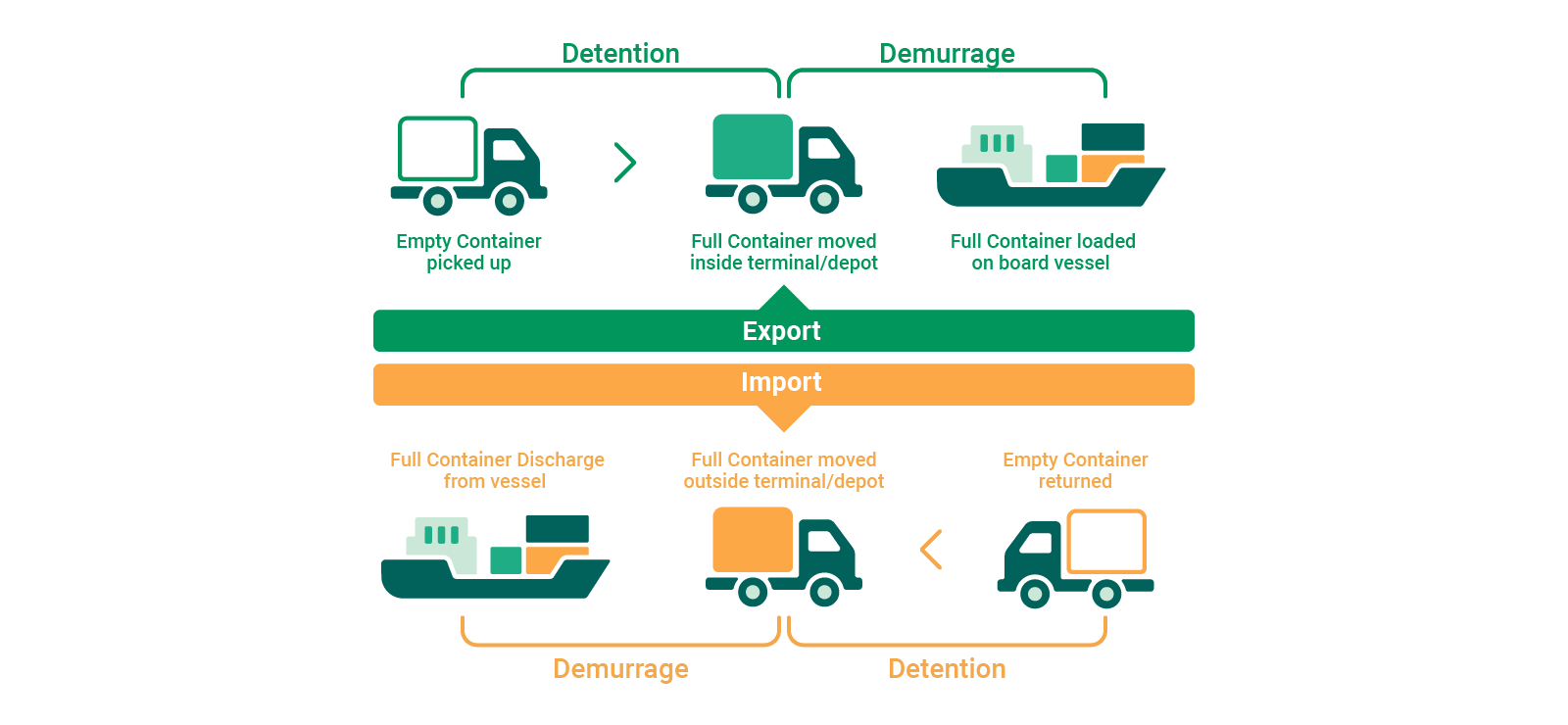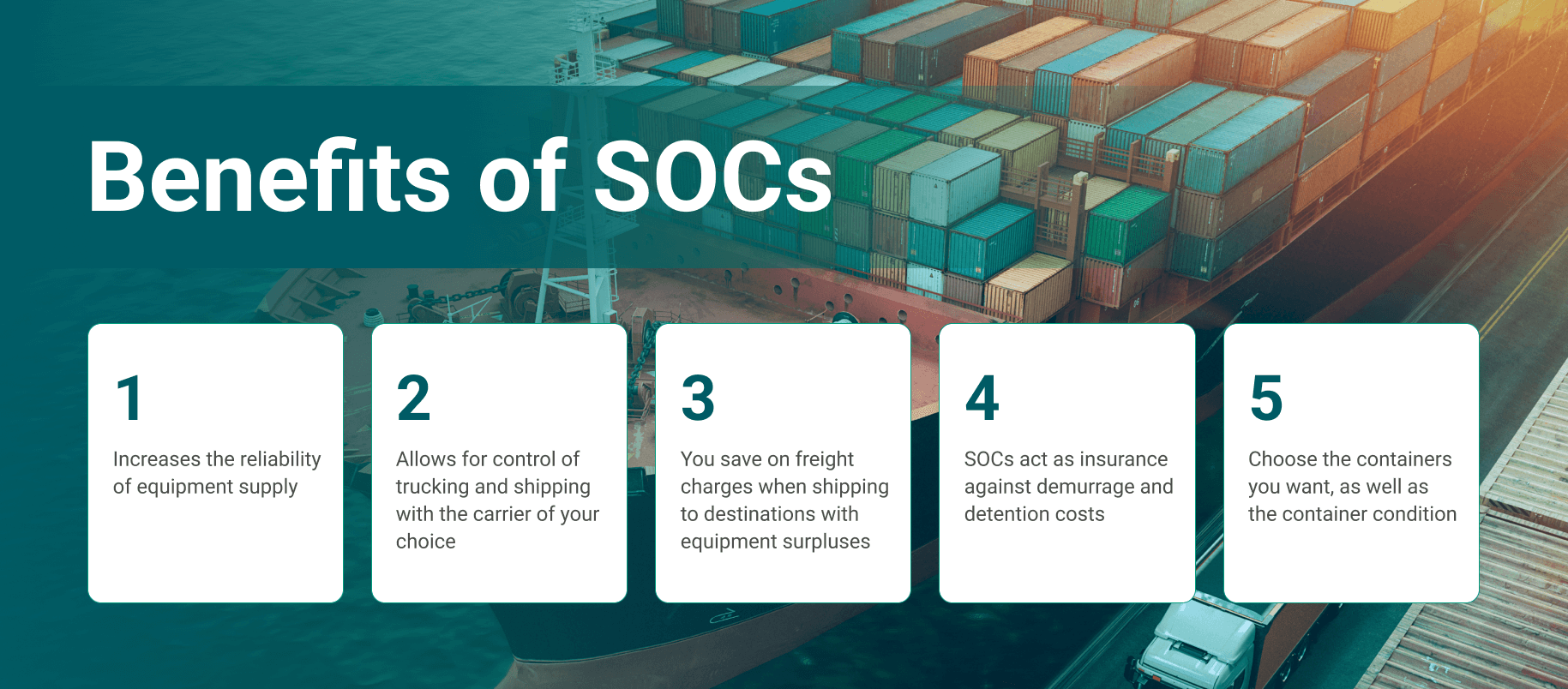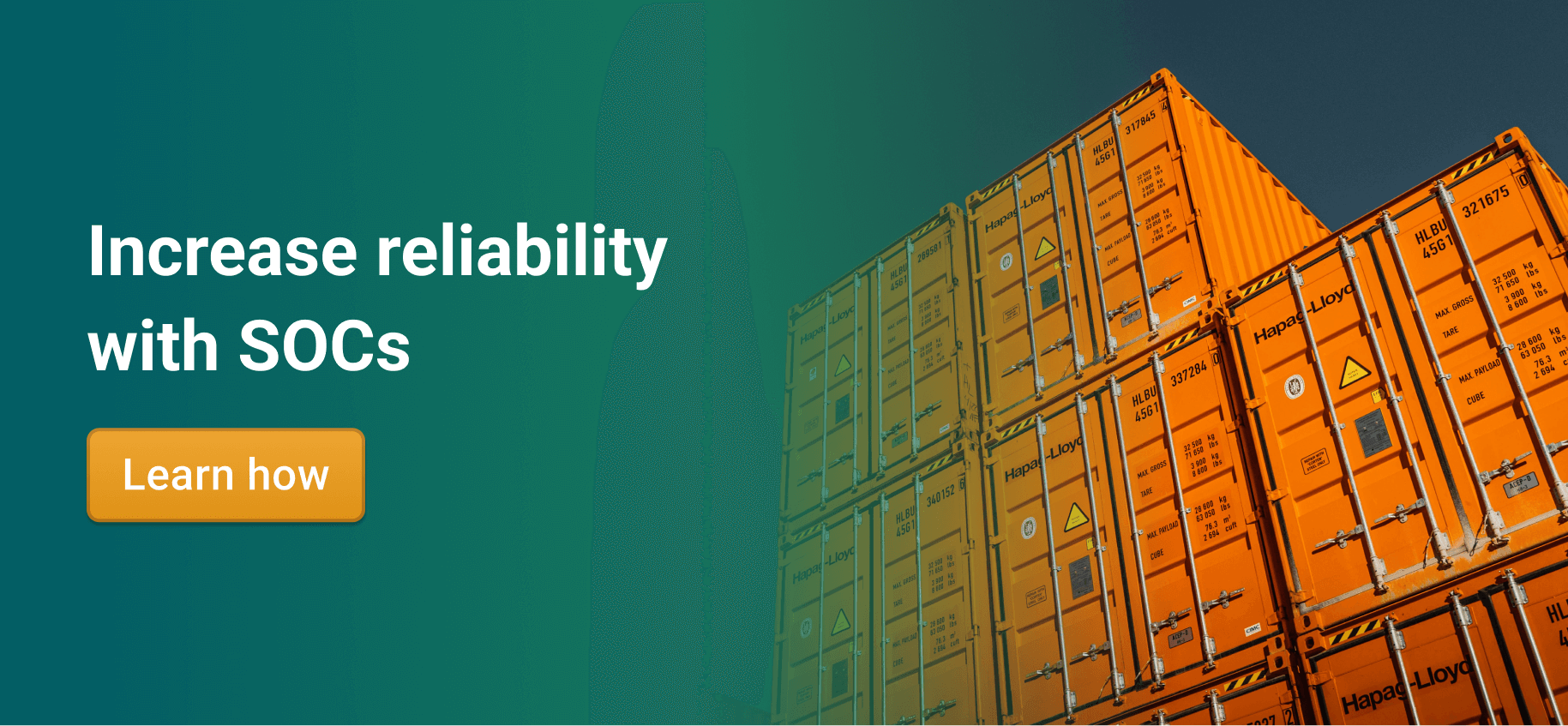Confused about what a freight charge is and how it applies to you? Read on to learn about freight rates, as well as how you can avoid demurrage and detention fees with Container xChange.
We understand that shipping charges can really start to pile up, putting strain on your business. With the Covid-19 pandemic, and the recent war in Ukraine, the container shortage crisis continues to grow. With this, freight charges have gone up drastically.
These days, finding available boxes is hit and miss. Which means you may very well find yourself without containers at the busiest of times. This can really limit the flexibility of your business and the flow of your cargo.
With so much congestion around ports at the moment, there are also fees like demurrage and detention to deal with. Sigh.
Due to the volatility of the industry, you can never be certain of how much you’re going to pay to ship your cargo. With the current market, freight rates can fluctuate by up to 50%. This can be extremely frustrating, not to mention stressful.
So, as a cargo owner, we’re certain you’re looking to save on fees wherever you can. The first step? Understanding what ‘freight charges’ are, and how you can reduce them.
But first, if you’re looking for containers, keep reading to find out how you can finally access boxes hassle-free, on demand.
On xChange, we’ve got 10,000+ containers available at any one time. Because of our high availability, we offer market value, and all rates are negotiable. Keen to see for yourself just how quick it is to find the boxes you need?
Simply choose ‘I want to use containers’, type in the pick up location and drop off location, and hit ‘search’.
What is a freight charge?
First things first, let’s go over the basics. A freight charge, also known as a freight rate, is charged for the transportation of goods in bulk via land, air, or ocean. The charges you’ll shell out depend on the carrier, freight forwarder or NVOCC option you go with. Each will have different rates and fees. Here are some factors that influence your freight charges:
- The weight of your cargo: The larger your cargo, the more hands are needed to load and unload it, and the more you’ll pay for the shipment.
- The value of your cargo: It goes without saying. The higher the value, the high the cost of replacing it if anything goes wrong.
- The distance your cargo will travel: The further your cargo travels, the higher the costs of shipping it.
To learn more about shipping by freight, check out this informative blog post.
There are many different types of freight charge arrangements, which we will cover in the next section.

Different kinds of freight charge
Now, let’s look at some of the different types of freight charges out there.
ConsigneeWhat is a consignee? When transporting freight (by ocean, air, or land), there are two parties involved — one who is shipping and the other who is receiving the freight. The recipient of the goods b... More collects
The consigneeWhat is a consignee? When transporting freight (by ocean, air, or land), there are two parties involved — one who is shipping and the other who is receiving the freight. The recipient of the goods b... More (typically the buyer to whom goods will be delivered) pays all freight charges when their goods arrive. The consigneeWhat is a consignee? When transporting freight (by ocean, air, or land), there are two parties involved — one who is shipping and the other who is receiving the freight. The recipient of the goods b... More is responsible for customs declarations and filing taxes.
Prepay and add
In this case, the shipper pays for the freight, and then charges the amount to the customer. This works well if the shipper and carrier have a good relationship, and good rates can be agreed on.
Third party
This is usually a professional logistics company who pays all freight charges. Third party is useful if the order is complicated or the receiver of a shipment is new to the shipping world.
Cash on delivery
The carrier collects payment on delivery and then forwards the payment to the shipper to be reimbursed.
Free on board origin
Free on board origin (FOB) is the moment when the seller gives up the rights to the goods. In a FOB charging situation, the freight now becomes the responsibility of the consignees at the shipper’s dock, and the consigneeWhat is a consignee? When transporting freight (by ocean, air, or land), there are two parties involved — one who is shipping and the other who is receiving the freight. The recipient of the goods b... More pays the associated fees.
You have to decide which option works best for you. All of the above kinds of freight charges work around a set of guidelines known as incoterms. We will learn more about what this is in the next section.
What are incoterms?
So you’ve heard this term being thrown around, but you’re not 100% sure what it means. Let’s take a step back and understand what incoterms are.
Incoterms are a set of rules put in place to make sure businesses on both a local and global level run smoothly.
These rules are set and revised by the International Chamber of Commerce. Incoterms help to prevent confusion in foreign trade contracts by laying out the obligations of both buyers and sellers clearly.
If you’re involved in either domestic or international trade, it’s a good idea to use these to help you understand each other and the terms of your business agreements. It’s also important to stay up to date on them, as they’re updated regularly.
If you’d like more information about incoterms, check out this informative piece.
Freight charges: Other costs
Besides the freight charge option you choose, there are other costs involved with shipping via ocean freight.
Damage and total loss insurance: It’s a good idea to take out insurance for any damages, or if your cargo goes missing during shipping. On xChange, we offer excellent deals including a DPP (Damage protection plan), total loss insurance and premium insurance. Learn more here.
Customs clearance: You always need to declare your cargo. If there’s something suspicious amongst your goods, or extra checks are needed, you’ll be in for extra charges. Make sure you check all customs rules beforehand to avoid extra costs or delays.
Verified gross mass filling: Your container will be weighed by the carrier at the port. If the weight calculated at the port doesn’t align with what you have declared, or exceeds the weight restrictions, you’ll be in for another fine. Make sure you calculate and record the weight of your cargo and container accurately, and check weight restrictions beforehand.
Freight charges: Dreaded demurrage and detention fees
Besides the freight charges you’re going to pay for shipping goods, you’re also up against demurrage and detention fees. These can occur if anything goes wrong between the time that your cargo leaves the port, and the time that it arrives at its destination.
In case these terms are a little unclear to you, let’s go over them now. Both demurrage and detention fees start to stack up when you’re running late with your containers, and you’ve exceeded your free days (days where the container can be used for free).
Freight charges: Demurrage
Demurrage relates to charges that occur when the container is inside the terminal after arrival. If a full container remains in the port after the free days are over, demurrage will be charged. This is in an attempt to decrease congestion inside the port.
Freight charges: Detention
Detention, on the other hand, refers to charges incurred outside of the terminal or port. In other words, detention charges occur when a container has been picked up, but has not yet been returned to the carrier. These are charged in an attempt to decrease container turnaround time, making shipping more efficient.
Want to learn more about demurrage and detention, take a look at this separate blog post.
To understand the differences better, have a look at the below diagram:

Demurrage and detention fees, on top of all of the other freight charges, can really leave you feeling down in the dumps. Luckily, we’ve got a solution for you. With Shipper Owned Containers (SOCs), those pesky demurrage and detention fees can finally be side-stepped. We’ll learn more about what SOCs are in the next section.
But first, who are we? Container xChange is a neutral marketplace for buying, selling and leasing shipping containers of all sizes and types. All of our members are vetted and pre-approved, so we guarantee they’re reliable, professional and transparent.
We work with big names in the industry, and because of our wide network of container traders, prices are regulated and availability is always high.
On our leasing platform, it’s easy to find the perfect SOCs for your shipping needs in no time at all. Let’s learn about SOCs and their benefits now.
How to cut down your freight charge
Build relationships
Establishing long-term relationships with carriers and freight forwarders will help you to secure better rates. The better the relationship, the bigger the discounts. Score!
Ship off peak
If you plan ahead, and are able to ship goods during off-peak times, you’ll save a ton of cash! During off peak season, demand is low, meaning shipping costs are lower too.
Reduce packaging
Try to minimize unnecessary packaging and add-ons that contribute to the overall weight of your cargo load. You could find that this saves you quite a bit.
Use SOCs to avoid D&D freight charges
SOCs or Shipper Owned Containers are containers owned by individuals or businesses, rather than by a shipping line or carrier. Usually when you ship cargo, you use containers operated by the carrier, NVOCC and freight forwarder. When you use a SOC, you ‘bring your own box’ and only need to pay for the slot on the shipping vessel. In this way, the carrier doesn’t own the box, and demurrage and detention fees can’t be charged if things go wrong.
SOCs are usually ‘borrowed’ from areas of surplus and moved to deficit areas, in order to increase supply in a certain location. On xChange, we have hundreds of SOCs available in multiple locations, at any time you need.
So, let’s check out some of the benefits of using SOCs for shipping cargo:

Increase reliability
SOCs are easy to find on Container xChange. We have over 10,000 containers available at any one time. You’ll never have to worry about being stuck without boxes at the last minute ever again. There are always hundreds of container owners looking to lease out their boxes, no matter when you log on.
Save on freight charges
Most of the time, you can use SOCs for free because the owner needs the container returned anyway and the box will travel empty if it’s not leased out. The container owner doesn’t have to pay for empty container repositioning, and you get to move your cargo without all of those pesky fees. It’s a win-win!
Protect yourself against demurrage and detention fees
Because the carrier doesn’t own the boxes, they can’t charge you demurrage or detention fees if your box gets delayed along its journey. This will save you heaps of money in the long run.
Choose your own boxes
On a platform like Container xChange, you have access to hundreds of quality boxes, so you can pick and choose the boxes you want. You can also specify the container condition you want, to ensure your goods will be safe on their shipment.
Want to learn more about how to avoid demurrage and detention with SOC containers on xChange? Check out our full report by clicking below.
Get quality SOCs easily on the Container xChange platform
Did you know that D&D charges can add up to over 20 times the value of a container itself? It’s time to use SOCs instead! Just think of all the money you could be saving.
Container xChange is a neutral and transparent marketplace for buying, selling and leasing shipping containers of every kind imaginable.
If you’re looking for SOCs, you’ve come to the perfect place. It’s so easy to find the perfect SOCs to lease on our trading platform.
Once you’re a member, you’ll have access to over 10,000 containers in over 2,500 locations worldwide.
You’ll get the chance to work with big names in the industry, from the moment you sign up and are vetted. This includes the likes of Cosco, CMA CGM, Kuehne + Nagel, and many more.
Want to get started right away? Sign up for a free platform demo today. One of our experts will get back to you to set up a time, and show you around our easy-to-use container marketplace.
Once you’re a member of xChange, a whole world of efficiency, reliability and flexibility opens up for you, so don’t miss out on the opportunity.
What is a freight charge?
The freight charge is the amount paid to the carrier company for the transportation of a shipper’s goods.
How is the freight charge calculated?
Freight charge is calculated depending on the type of transportation and the distance between the pick up and drop off locations. Shipments may be transported using freight prepaid or freight collect, according to incoterm rules.
Who pays the freight charges?
Freight charges are paid by the seller when it’s to a major port or shipping destination. The buyer pays the transport costs from the warehouse to a store or vendor. Who pays what is determined by the terms of sale.




